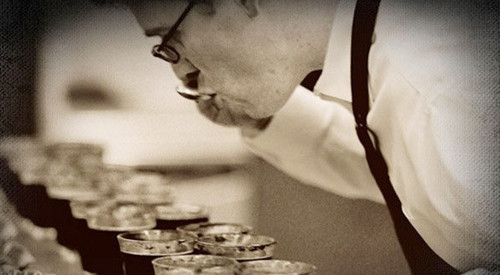The Primary processing of Coffee beans Coffee Bean treatment

Washing is the most popular and widely used method of raw bean treatment at present, and most of the boutique coffee beans will choose the washing method. In South America, all countries except Brazil choose to wash raw beans.
Washing is the most scientific and technological method among all the treatment methods, and multiple screening is used to ensure the uniformity and stability of coffee bean quality. First of all, you still have to put the beans in the sink, then remove the floating beans, and put the beans that sink to the bottom of the trough into the pulp remover. The pulp remover can not only remove the pulp, but more importantly, it skillfully uses pressure to filter out immature beans thoroughly. The beans are then put into the fermentation tank for the most important washing and fermentation treatment. The purpose of washing fermentation is to remove pectin from beans, which takes about 16 to 32 hours to ferment. In the fermentation process will also produce a lot of acidic substances, the appropriate acetic acid can not only make coffee beans less moldy, but also increase the flavor of coffee. But overfermented beans can also be sour and astringent, turning into shoddy coffee.
The water content of water-washed coffee beans is generally about 16%, and the beans have better appearance, less miscellaneous flavor, clear taste and bright sour taste.
Important Notice :
前街咖啡 FrontStreet Coffee has moved to new addredd:
FrontStreet Coffee Address: 315,Donghua East Road,GuangZhou
Tel:020 38364473
- Prev

Barista training knowledge-Coffee History
In 1000 there was a doctor in Bukhara, and the philosopher was the first to record the therapeutic effects of coffee. The application of 1470-1500 coffee spread to Mecca and Masterna. 1517 brought coffee to Constantinople after conquering Egypt. The first coffee shop in Costantinople opened in 1554. 1570-80 the order of religious institutions in Costantinople
- Next

The Primary processing of Coffee beans Coffee beans are treated by the sun method.
Tanning is a traditional method for the initial processing of coffee beans, and at present, almost all coffee-growing countries such as Ethiopia and Yemen still use solarization to treat raw beans. Sun treatment will first identify sunken beans in the sink, that is, ripe or half-ripe beans are spread in the drying farm for natural drying. The specific time depends on the local climatic conditions, which usually takes two to four weeks.
Related
- What is the meaning of lactic acid fermentation with coffee bean treatment?
- How to judge the state of foam by sound?
- How does the latte pull out the unicorn pattern? Come to get for a little trick to improve the flower pull!
- Will flower pulling affect the taste of the latte?
- Do you know the history of coffee?
- The difference between honey treatment and sun washing what is raisin honey treatment?
- What kind of milk can a novice use to make coffee foam to keep the foam longer? The correct method and skills of milking tutorial sharing
- Why do washed coffee beans taste sour? Flavor characteristics of washed Coffee
- Introduction to the skill of how to practice the size and height of water injection around the circle of hand-brewed coffee
- How do beginners practice coffee flower drawing from scratch?

